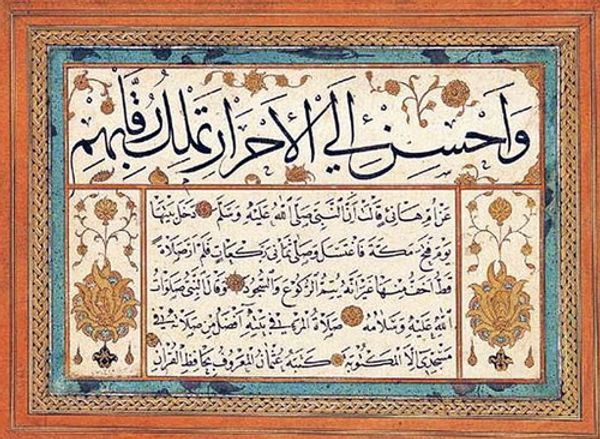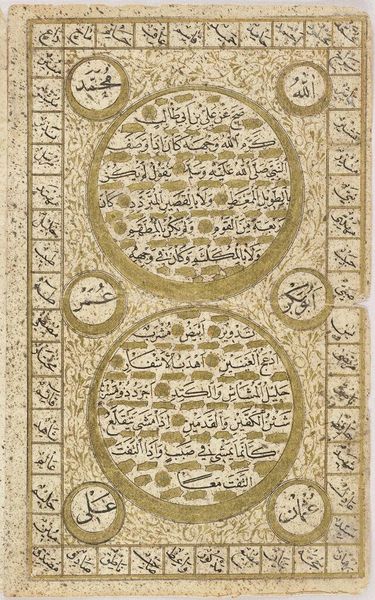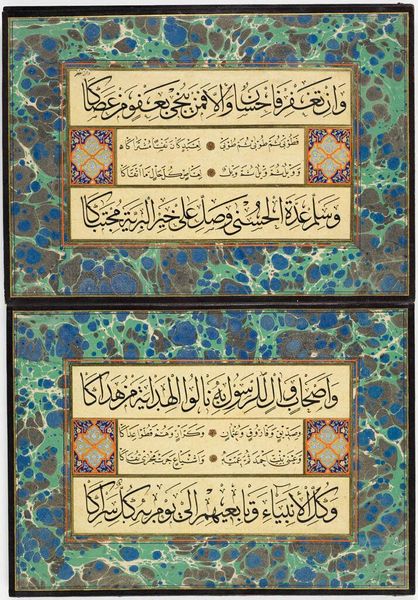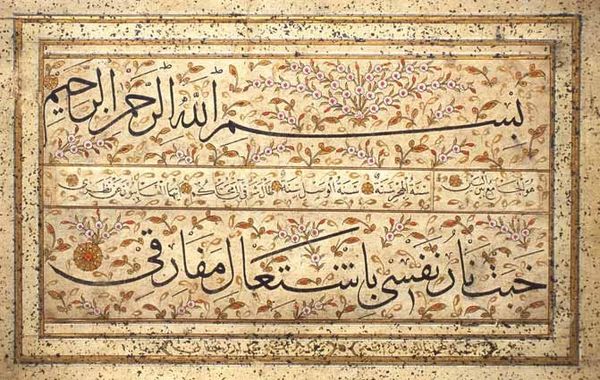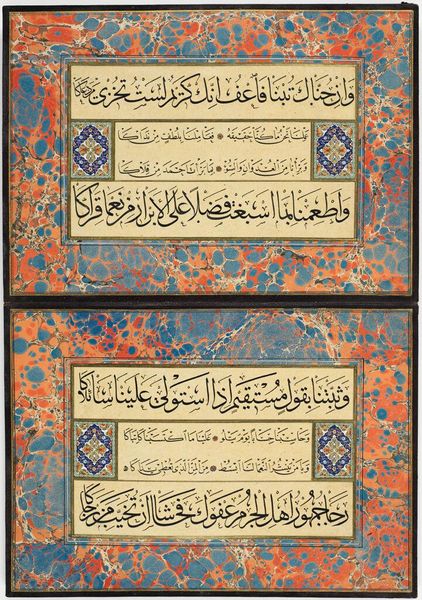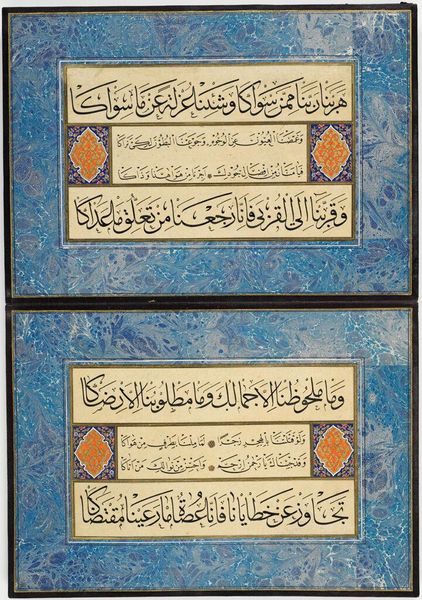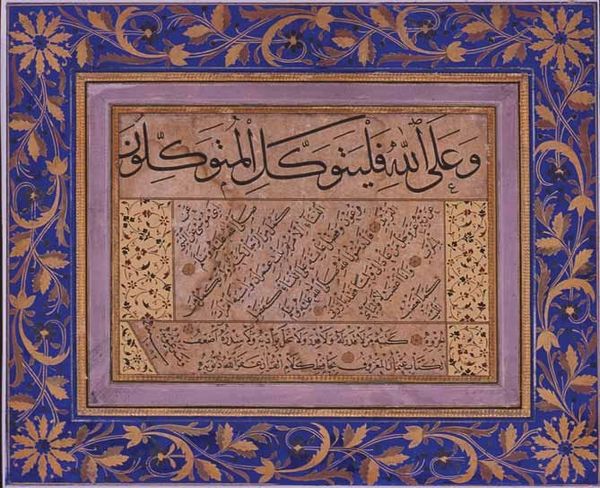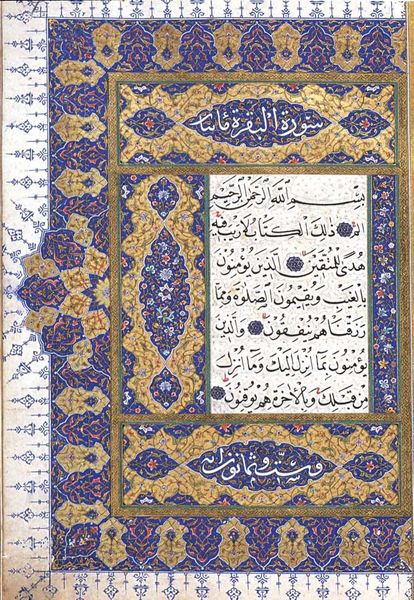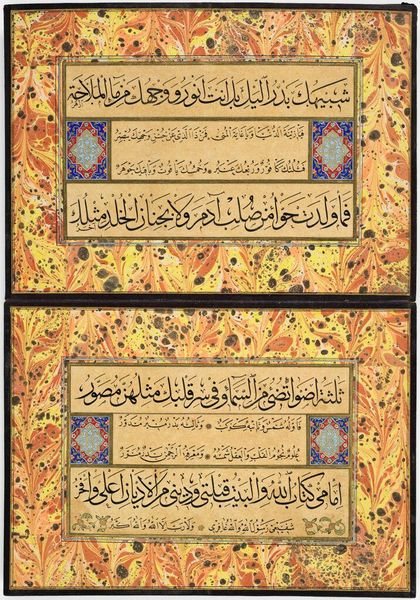
#
geometric
#
abstraction
#
islamic-art
#
decorative-art
#
calligraphy
Copyright: Public domain
Curator: This artwork is titled "A Large Size Mushaf." We lack precise dating, but its style certainly places it within a rich tradition of Islamic calligraphy. What strikes you most about it? Editor: The decorative quality! It feels almost abstract with its intricate geometric patterns and elegant script. It makes me think about devotion and beauty. How does its function as a religious text influence its artistic expression? Curator: The *mushaf*, the written text of the Quran, holds immense cultural and religious significance. Think about the institutions surrounding its creation: the calligraphers, the patrons, the religious scholars who dictated the proper way to render the text. Every aspect, from the paper to the ink, was carefully considered to reflect the sacred nature of the words. It’s more than just writing; it’s a visual representation of faith and power. Who do you think was the audience for this manuscript? Editor: Considering the large size, was it maybe made for display within a mosque, or for someone of high status who wanted to signal their piety and wealth? Curator: Exactly! These lavish manuscripts were often commissioned by rulers or wealthy individuals to demonstrate their devotion. What do you think the implications are of limiting religious texts to those elite segments of society? Editor: Well, it definitely raises questions about access to knowledge and power dynamics within religious communities, and whose voices are really heard and valued. I hadn’t considered those elements before. Thanks, this really makes me appreciate this artwork more. Curator: Likewise, seeing your perspective is incredibly illuminating. We need to remember that art is never created in a vacuum; it is shaped by and, in turn, shapes society.
Comments
No comments
Be the first to comment and join the conversation on the ultimate creative platform.


